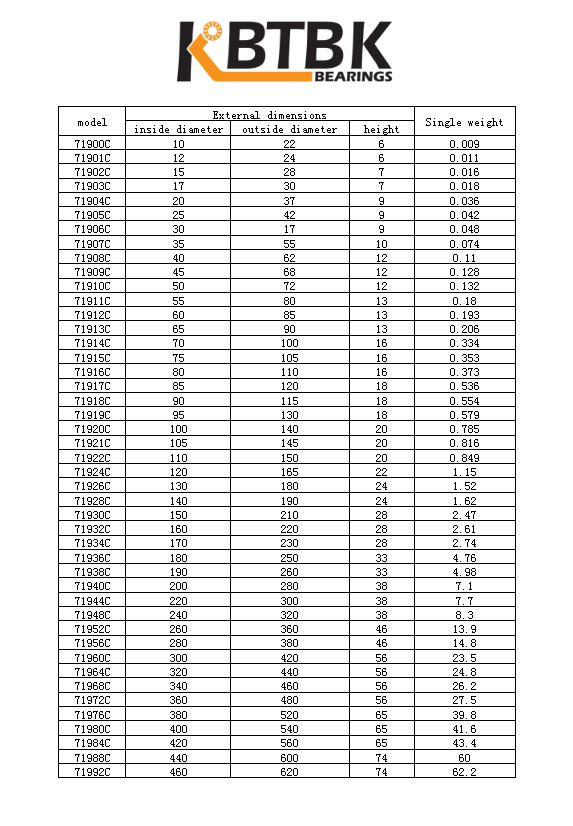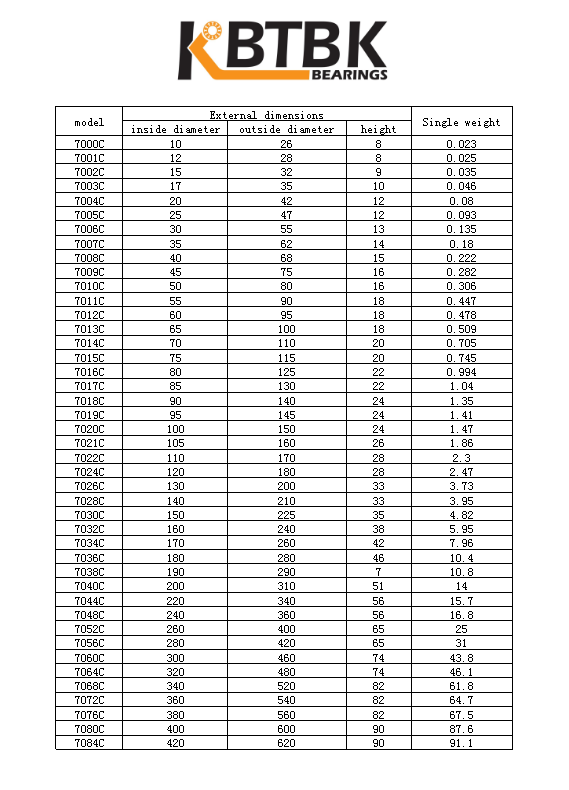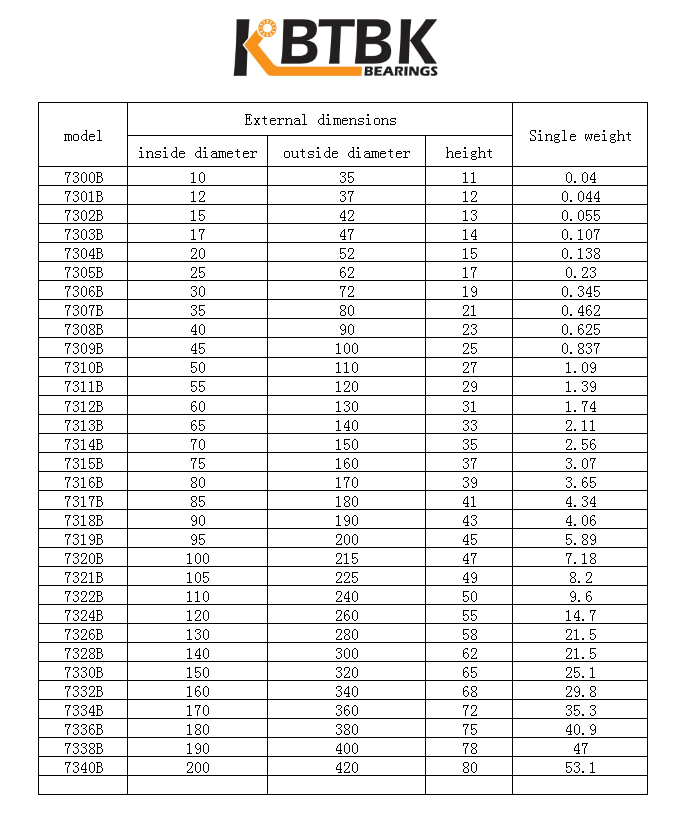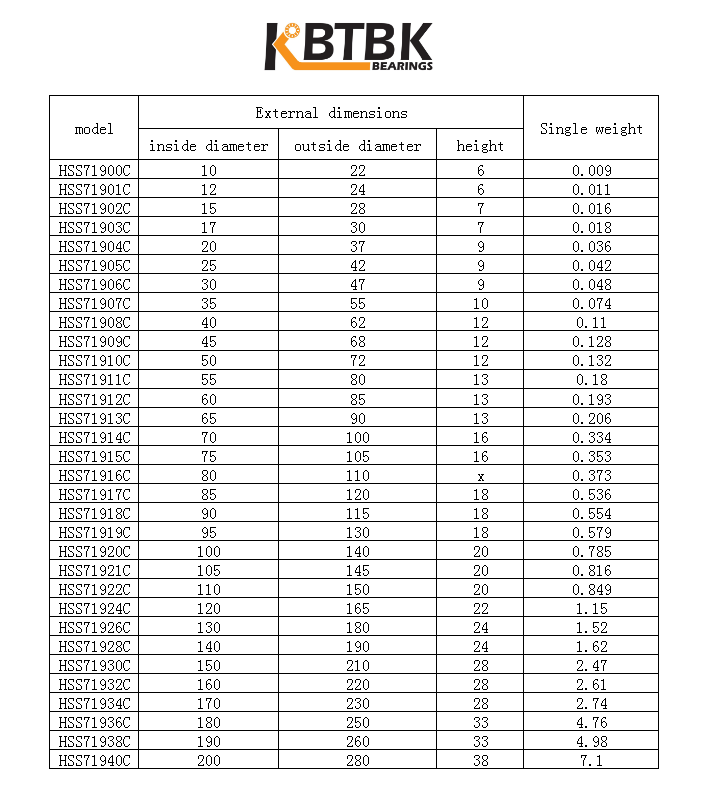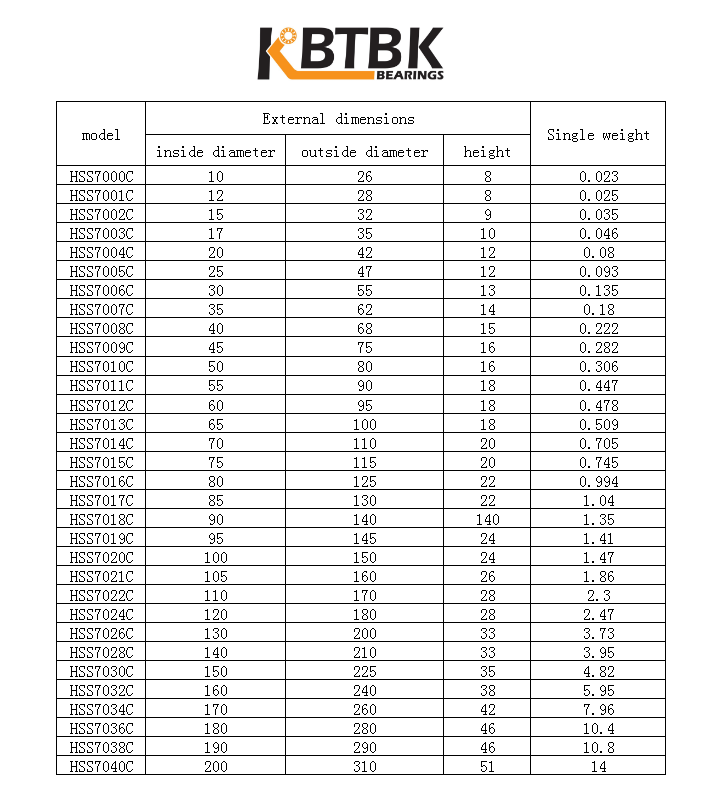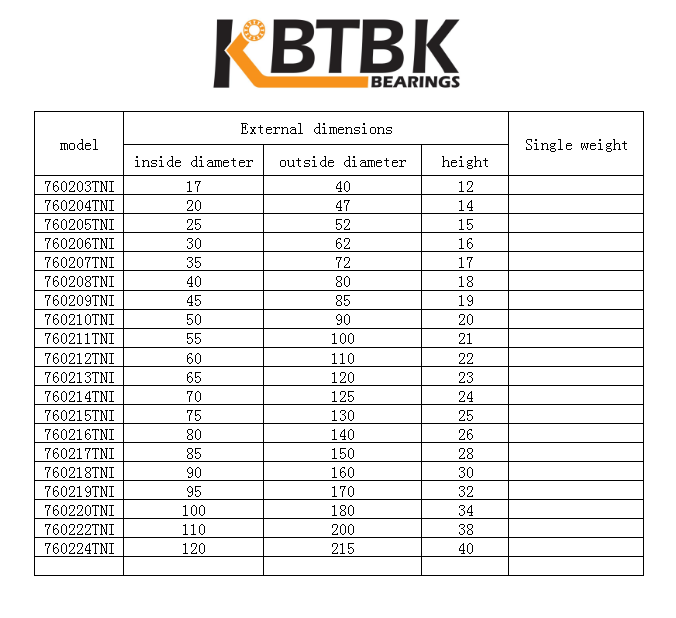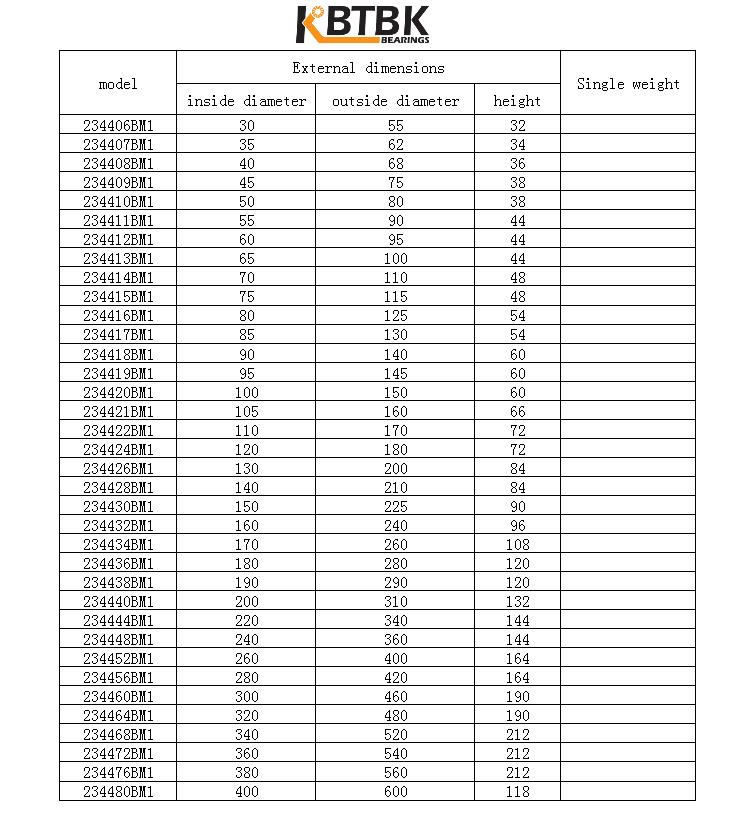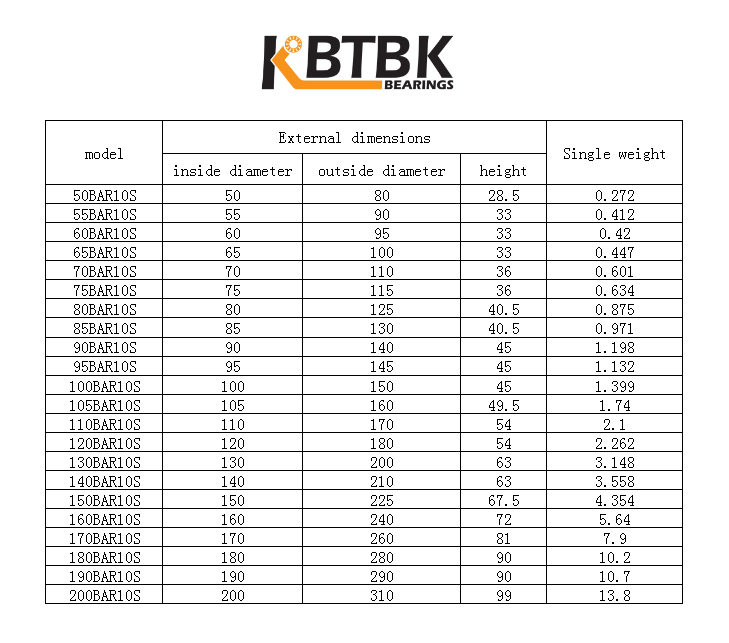Single Row angular contact ball bearings can only bear one direction of the axial load, when the radial load, will cause additional axial force. And can only limit the axial displacement of the shaft or housing in one direction. Angular contact ball bearings have a contact angle of 40 degrees and can therefore withstand large axial loads. Angular contact ball bearings are non-separable in design, with different shoulder heights on both sides of the inner and outer rings. In order to increase the load capacity of the bearing, one side of the shoulder is machined lower so that the bearing can be loaded into more balls. Double-row angular contact ball bearing can bear large radial load mainly radial and axial combined load and torque load, limit the axial displacement of both sides of the shaft. Limited inclination between inner and outer rings of double-row angular contact ball bearings in components used primarily to limit biaxial displacement of shafts and enclosures, the allowable inclination angle depends on the internal clearance of the bearing, the bearing size, the internal design and the forces and moments acting on the bearing. If there is an inclined angle between the inner and outer rings of the bearing, it will affect the life of the bearing, at the same time lead to the decrease of the running precision and the increase of the running noise. Double Row angular contact ball bearings generally use nylon cage or brass solid cage. Double Row angular contact ball bearing installation should be noted, although the bearing can withstand two-way axial load, but if one side of the ball-loading gap, should be careful not to let the main axial load through the gap side groove. When the bearing is used, the main load should be borne on one side of the raceway without the ball-loading gap.
